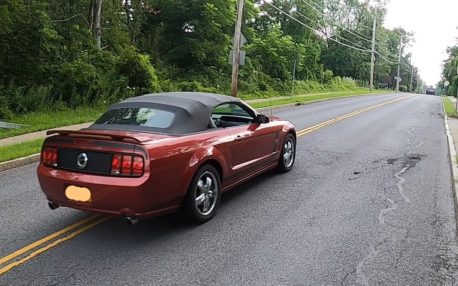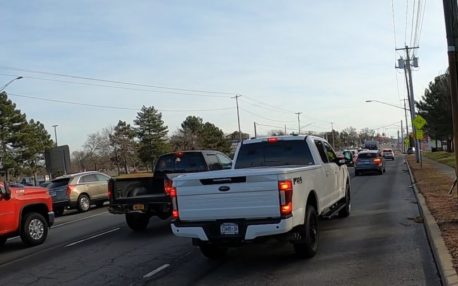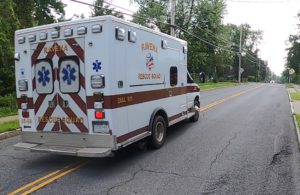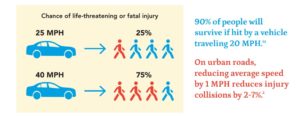
“Speeding impairs the ability of drivers to process the environment that they are speeding through thereby increasing the likelihood of collisions.”

Speeding drivers increase the likelihood of collisions because they have impaired their ability to both react to potential collisions.

Speeders increase the likelihood of collisions because they have impaired their ability to stop their vehicles before a collision occurs.

Speeding makes collisions more likely
The devastation caused by persons driving while their abilities are impaired by alcohol and drugs cannot be overstated. Countless lives have been lost and wasted. Countless families have been shattered. Without diminishing the need to prevent drunk and drugged driving we need to recognize that speeding is another form of impaired driving.
First, the faster motor vehicles are driven, the narrower drivers’ fields of vision become. The greater the speed the more drivers focus on what is directly in front. Due to this well documented tunnel effect, peripheral vision decreases. Interstates compensate for this problem and permit higher speeds by providing wide lanes and shoulders, eliminating intersections and keeping the areas to the sides of the highway free of hazards, pedestrians, cyclists and distractions. Inside suburbs and cities speed limits need to be lower so that drivers can contend with the denser environments and the increased possibility of collisions. Speeding impairs the ability of drivers to process the environment that they are speeding through thereby increasing the likelihood of collisions.
Second, the faster a motor vehicle is driven the less time drivers have to react to potential collisions. We know persons under the influence of drugs and alcohol create more collisions because they react more slowly and with poorer judgment in such situations. Speeding drivers increase the likelihood of collisions because they have impaired their ability to both react to potential collisions.
Third, higher speeds increase the distance required to stop a vehicle with the same force applied to the braking system. Speeders increase the likelihood of collisions because they have impaired their ability to stop their vehicles before a collision occurs.
Speeding makes collisions deadlier
In one way, the driver impaired by speeding is worse than a driver impaired by drugs or alcohol. A drunk or drugged driver doing the speed limit hitting another vehicle, pedestrian or cyclist will not do as much physical damage as a speeder striking the same vehicle, pedestrian or cyclist. For example, imagine two drivers, one drunk traveling the speed limit of 25 mph and one sober speeder traveling at 40 mph both hit identical pedestrians at the same angle, on identical roads while driving identical vehicles. According to a report by the AAA Foundation for Traffic Safety, the pedestrian hit at 25 mph, will have a 25% chance of a life threatening or fatal injury. The driver speeding at 40 mph will inflict a life threatening or fatal injury 75% of the time.
This is not to say that drunk and drugged drivers should not be held culpable for the harm they cause. Rather, those that willfully impair their driving by speeding need to be accountable as well.
Reviewing crash data for the four primary counties of the Capital Region (Albany, Rensselaer, Saratoga and Schenectady since COVID we have seen 3779 less crashes in 2022 than in 2019. Conversely, the quantity of both fatalities and serious injuries have increased. The number of serious injuries and fatalities as compared to the number of crashes has increased every year from 2019 to 2022. Less crashes. More deaths and more serious injuries. How is this happening? The most likely reasons are that people are driving faster, driving more massive vehicles and driving with less attention to what they should be doing.
Controlling the massiveness of vehicles is not in cards any time soon. Efforts to educate drivers about distracted driving have been ongoing and have had questionable effectiveness. Technological solutions for distracted driving that are being installed in some newer vehicles may help but data is limited and it will be many years before such technologies are in the vast majority of vehicles on our roadways. This leaves controlling speed as the only factor that can stop the mayhem in the near term.
There have been reports that many municipalities have greatly reduced the number of tickets they have been writing since COVID began. Greater enforcement will certainly help, but we probably don’t have the law enforcement personnel needed to eliminate speeding and all our other crime problems. Automated enforcement is one possibility, but that will certainly raise the hackles of persons concerned about the government observing our every move.
lowering speed limits
All our region’s major cities and some other municipalities are proposing to lower speed limits to 25 mph. Studies have shown that lower speed limits do lower speeds for all drivers – even speeders. Lower speeds should reduce deaths and serious injuries. These proposals were initiated by a new NY law passed in 2022 that allows municipalities to lower speed limits to a 25 mph minimum (school zones can be even lower).
The 25 mph law has been interpreted by NYSDOT as requiring our municipalities to perform extensive speed studies before speeds can be lowered, so nothing will happen overnight. However, it can be expected that these speed studies will have some call for public input. Those of us who recognize the importance of reducing speeds to stem mayhem on our roadways need to be ready and willing to speak out when these forums are available.